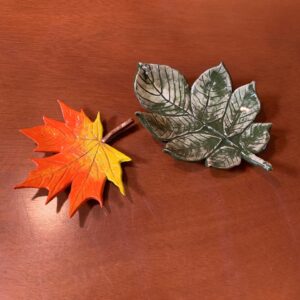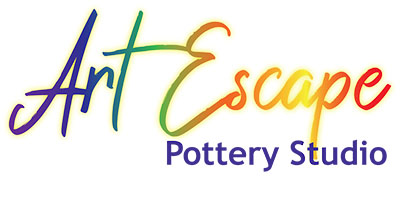
Leaves
A Pottery Journey into Microscopic Depths
Pottery, an ancient art form dating back millennia, holds within it a wealth of scientific knowledge waiting to be unearthed. At its core lies clay, a humble yet versatile material whose properties and behavior are governed by intricate scientific principles. For those with a curious mind and a thirst for understanding, delving into the microscopic world of clay opens up a fascinating realm of discovery and insight. Here’s how pottery courses focusing on clay’s scientific properties can provide a deep dive into this captivating subject:
Understanding Clay Composition: Clay, in its simplest form, is a finely-grained mineral substance composed of hydrated silicates. Pottery courses delve into the chemical composition of clay, exploring its mineralogical makeup and how different minerals interact to give clay its unique properties.
Exploring Clay’s Structure: Beneath the surface, clay reveals a complex internal structure composed of tiny particles known as platelets. Pottery courses offer insights into clay’s microstructure, examining how platelets arrange themselves to form the matrix that defines clay’s plasticity, strength, and plastic deformation behavior.
Unraveling Clay’s Properties: Clay’s properties, such as plasticity, shrinkage, and firing behavior, are intricately tied to its microscopic structure and composition. Through pottery courses, students gain a deep understanding of these properties, learning how they influence the behavior of clay during forming, drying, and firing processes.
Investigating Clay-Water Interactions: Water plays a crucial role in shaping clay’s behavior, facilitating plasticity and moldability during forming and acting as a vehicle for transporting minerals during firing. Pottery courses explore the complex interplay between clay and water at the microscopic level, shedding light on the mechanisms underlying clay-water interactions.
Examining Firing Transformations: Firing clay transforms it from a malleable material into a durable ceramic object, a process governed by intricate chemical and physical changes occurring at the microscopic level. Pottery courses delve into the science of firing, exploring phenomena such as dehydration, sintering, and vitrification that take place during the firing process.
Analyzing Glaze Chemistry: Glazes, applied to pottery surfaces to enhance aesthetics and functionality, are complex mixtures of minerals and fluxes that undergo chemical transformations during firing. Pottery courses focusing on glaze chemistry delve into the microscopic interactions between glaze components, offering insights into glaze formulation and application techniques.
Investigating Thermal Stress: Thermal stress, induced by uneven heating and cooling during firing, can lead to cracking and warping of pottery. Pottery courses explore the microscopic origins of thermal stress, examining how differences in thermal expansion coefficients between clay and glaze layers contribute to stress buildup and fracture.
Examining Surface Defects: Surface defects, such as pinholes, blisters, and crazing, can mar the appearance and functionality of pottery. Pottery courses investigate the microscopic mechanisms underlying surface defects, exploring factors such as gas evolution, entrapped air, and glaze-clay interactions that contribute to defect formation.
Studying Clay Additives: Additives, such as grog, sand, and organic materials, are often incorporated into clay bodies to modify their properties and enhance their performance. Pottery courses delve into the microscopic effects of additives, analyzing how they influence clay’s plasticity, shrinkage, and firing behavior.
Exploring Innovations in Clay Science: As scientific understanding of clay continues to evolve, new insights and innovations are emerging that push the boundaries of traditional pottery techniques. Pottery courses provide a platform for exploring these cutting-edge developments, from advanced clay formulations to novel firing technologies, offering students the opportunity to engage with the forefront of clay science.
In conclusion, pottery courses focusing on clay’s scientific properties offer a fascinating journey into the microscopic world of clay, providing students with a deep understanding of its composition, structure, properties, and behavior. By unraveling the scientific mysteries of clay, students gain valuable insights that enrich their pottery practice and open up new avenues for exploration and innovation in this ancient art form. Whether delving into clay’s microstructure or investigating firing transformations, the journey into clay science promises endless opportunities for discovery, creativity, and growth in the world of pottery
